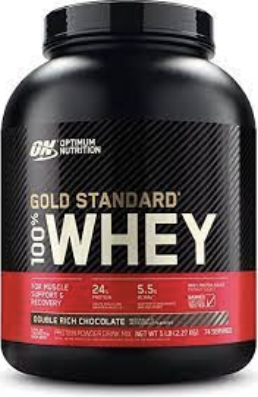Arnold Schwarzenegger, regarded by many as the king of golden age bodybuilding, used a variety of different body supplements to improve his performance. While some of these supplements included steroids, which can be harmful and are banned in many competitions due to the sake of integrity, there are numerous other supplement options that can safely improve an athlete’s progress in the gym.
From building muscle to increasing injury recovery speed, body supplements have much to offer. While many are useful, some have unknown side effects.
Despite little research done on recently popularized supplements, the gym-frequenting community has come to a general consensus for each of the following.
Protein Powder
Protein powder comes in many forms, with the most commonly used being whey and egg protein. The difference between the two lies in their source: Whey protein is derived from dairy products whereas egg protein, like the name suggests, is derived from eggs. Typically, whey protein will cost around $5 per 100 grams, depending on the brand supplying it.
For rookie weightlifters and bodybuilders, protein powder is the supplement every experienced gym member recommends. In addition to being one of the most commonly used supplements, protein powder has many Food and Drug Administration (FDA) approved forms and research asserting its safety. That being said, since protein powder is classified as a body supplement, it does not undergo the same FDA procedures as regular food products. In addition, some manufacturers skip safety regulations in the interest of profit. This makes choosing the right brand important, with Optimum Nutrition, Orgain and Legion serving as some of the most trustworthy. Nearly all gym goers use protein powder, whether it be for increasing muscle mass or building endurance.
Personally, I have used Optimum Nutrition’s Gold Standard whey protein powder ever since I began working out in June and I’ve found it to be extremely beneficial for muscle gain. I would also recommend using the other brands named above, but Optimum Nutrition is the easiest to find online. The results I achieve with this supplement are clearly noticeable in both size and definition of my muscles and keep my body healthy and ready for the next workout.
Creatine
Unlike protein powder, creatine has caused controversy after its rise to popularity in the 1990s due to supposed side effects such as stomach pain and diarrhea. The supplement increases the chemicals in the body that control Adenosine triphosphate (ATP), the body’s main source of energy. This allows the user to lift heavier weights, leading to more muscle breakdown and growth. Creatine can cost around $5 per 100 grams as well.
While creatine is used by many weightlifters to get stronger, it has not been on the market long enough for scientists to understand all of its long-term effects. However, many experts have hypothesized that it is safe through studies on subjects who have used it for up to 20 years without major detriment to their physical health. Certain forms of creatine, such as creatine nitrate and creatine monohydrate, have been FDA approved, which make them the best choices.
Though effective, creatine has an off-putting taste. In comparison to protein powder, which I can wash down with water, I can barely force myself to drink the concoction of creatine and water. Thus, those who can’t force themselves to gag down a shake with bad flavor may want to look at more approachable supplements.
While the taste isn’t ideal, I use creatine to boost my athletic performance and strength whenever I feel that my progress is stagnating, but so far my progress has mostly been fine without it.
SARMs
As the supplement most similar to steroids, Selective Androgen Receptor Modulators (SARMs) have been controversial ever since their huge leap in popularity two years ago. SARMs and steroids are similar in how they work, with the difference being that SARMs limit the side effects from spreading out from the target muscle group. Few stores offer SARMs on site, and online prices vary from website to website. However, a month’s supply of SARMs will usually cost around $30 to $60.
With research proving that this substance has side effects that are harmful to the body, SARMs are not something rookie athletes should attempt to use. Personally, I have never used any SARMs and do not plan on starting. Although it is clearly the supplement that provides the biggest muscle gain, its close relation to steroids makes it unappealing for many gym-goers, including myself.
If a beginner is looking to make the most progress possible while staying within safe boundaries, creatine is the way to go. Although there is not as much research behind creatine as there is on protein powder, many researchers and gym enthusiasts promote this supplement. On the other hand, SARMs are a substance that should not be taken by new weightlifters. Although there are many popular supplements out there, it’s important to observe their effects carefully: Everybody is built differently, and should take the time to figure out what their body needs.
























